What Is WD-40 Made Of? History, Ingredients & Uses
-

- Last updated:
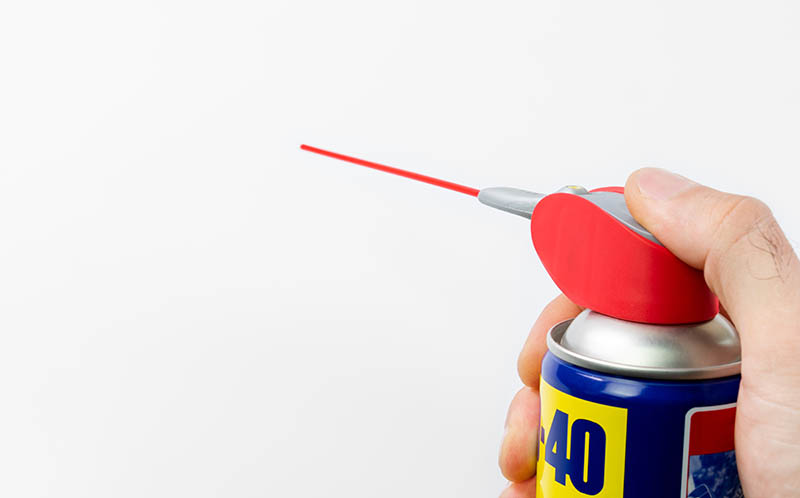
WD-40 is a well-known cleaner and lubricant brand. Over the years, it has justifiably become a household name, but how well-versed are you in its creation story, ingredients, and uses? The formula is still kept a well-guarded secret in San Diego, California. The firm, however, admits that the product comprises 50% mineral spirits and the other 50% a proprietary blend of additional lubricants and anti-corrosion chemicals. Keeping reading as we’ll be looking at all this and more!

The Birth of WD-40
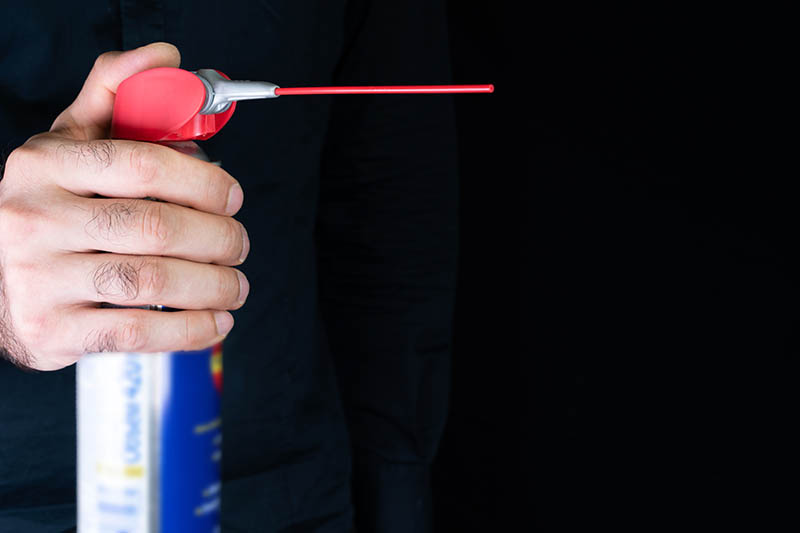
According to the manufacturer, WD-40 means “Water Displacement 40th”. In 1953, Norman Larsen was trying to create a formula that would stop rusting by displacing water. Fortunately, his perseverance paid off when he succeeded in perfecting the WD-40 formula on the 40th attempt.
A few years later, Larsen founded the Rocket Chemical Company with the help of some colleagues to manufacture WD-40 before he found out that it had many household uses. Later, plans to repackage WD-40 into aerosol cans were set in motion, and before long, the product was rolling to many homes.
In 1969, they renamed the Rocket Chemical Company after the product, WD-40, and publicized it in 1973.

Ingredients in WD-40
The main ingredients in WD-40, according to the US Material Safety Data Sheet information, are as follows:
Aliphatic Hydrocarbons
Aliphatic hydrocarbons are basically alkanes, alkenes, and alkynes and account for 45 to 50% of WD-40. However, according to the manufacturer’s website, the current formulation ratio cannot be correctly defined.
Decane
Decane (C10H22), also a typical component of gasoline, aids in the stability of WD-40 at low temperatures. The freezing point of decane is about -21⁰F, which is the main reason WD-40 has a very low freezing point.
Nonane
Nonane is a straight-chain alkane with nine carbon atoms. These molecules are useful in this situation because their hydrogen atoms lack a charge, which prevents them from connecting to the oxygen and hydrogen in water (H2O), making them water-repellant. After all, WD-40 was formulated to displace water.
Cyclohexane
Cyclohexane is an alicyclic hydrocarbon. The prefix Cyclo means it is in the form of a ring, unlike typical alkanes, which exist in chains. The cyclic shape gives these hydrocarbons a higher melting point.
Caution: Inhaling cyclohexane will knock you out. This is why you should not spray WD-40 near your mouth or airways.
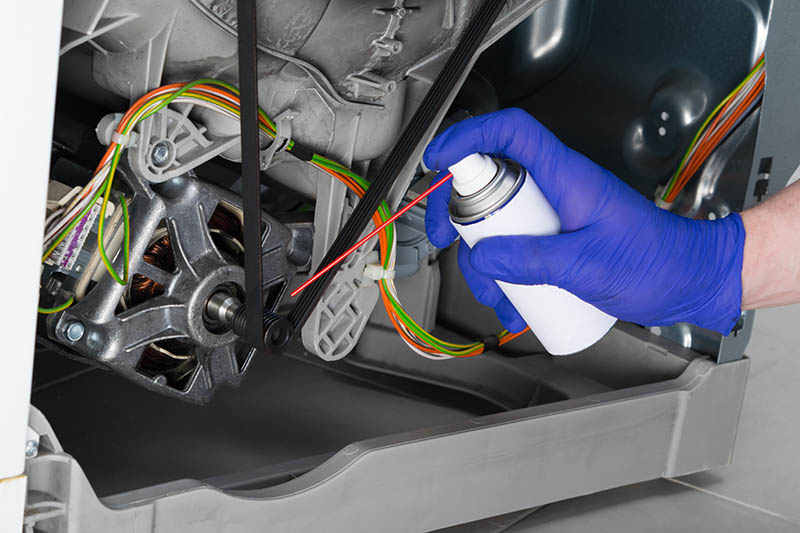
Dimethyl Naphthalene
Dimethyl Naphthalene exists in 10 forms (also called isomers). One of these is a hormone released naturally by potatoes. Another is of immense benefit in high-performance engineering plastics. Unfortunately, we’re unable to identify the ones present here—most sources refer to them as “a mixture of isomers.”
Petroleum Base Oil
WD-40 is presumably a mixture of lubricating oil and non-hazardous heavy paraffin, which cumulatively accounts for less than 35% of the WD-40.
Carbon Dioxide
According to the WD-40 firm, employing CO2 as a propellant avoids making use of smaller gaseous alkanes, such as propane and butane that can be dangerous to the environment.
The long-term active ingredient is a non-volatile viscous oil that stays on the surface it’s applied to and provides lubrication and moisture protection. A volatile hydrocarbon is added to the oil to dilute it, resulting in a low-viscosity fluid that can be aerosolized to infiltrate cracks or fissures. The oil is then left behind when the volatile hydrocarbon evaporates.
Carbon dioxide also plays the role of propellant (initially a hydrocarbon with low molecular weight). Its gaseous state raises the pressure in the can tremendously, forcing the liquid through the can’s nozzle before evaporating.
Common Uses of WD-40
Due to its qualities, WD-40 can be used in both commercial and domestic settings.
Quiet Squeaky Hinges
The oil and hydrocarbons in the spray will silence various items, including car doors, sticking ladders, swinging gates, windshield wipers, folding chairs, fire alarm boxes, roof ventilators, pruning shears, and storm doors, to mention a few.
Prevent Rust
For parts or tools exposed to humidity or rain, spray on some WD-40 and wipe clean to keep rust at bay. It will repel water and form an airtight seal between the metal and the environment, stopping rusting.
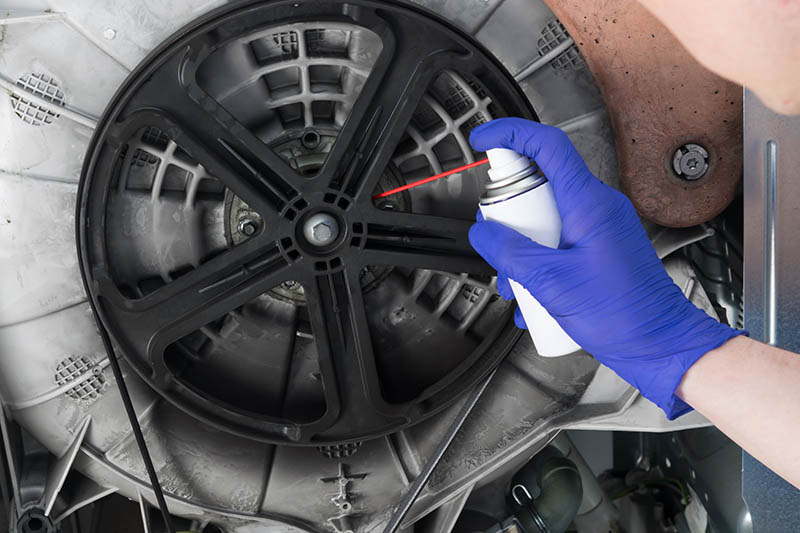
Lubricate Moving Elements
If a part needs to close, open, zip, turn, slide, lift, spin, or rotate, generously spray the lubricant and let it do its penetrating work. Use WD-40 to lubricate chains, pulleys, garage door rollers, dolly wheels, saws, and mower blades to keep them functioning smoothly.
Keep Dead Bugs off Your Vehicle’s Grille
Before heading for a drive, spray some WD-40 on the hood and grille. Dead bugs will glide off easily.
The few remaining bugs can easily be wiped off without harming your vehicle’s finish.
Remove Broken Keys From Locks
A broken key is a surefire way to ruin your day, but not until WD-40 comes to your rescue. WD-40 will help you unlock lock parts and take out the broken key, regardless of whether you’re working on a tool shed lock or a car door.
Clean Carpet Stains
WD-40 can also help in removing stains such as ink from your carpet. Spray it and wait a few minutes before cleansing it with your normal carpet cleaner.
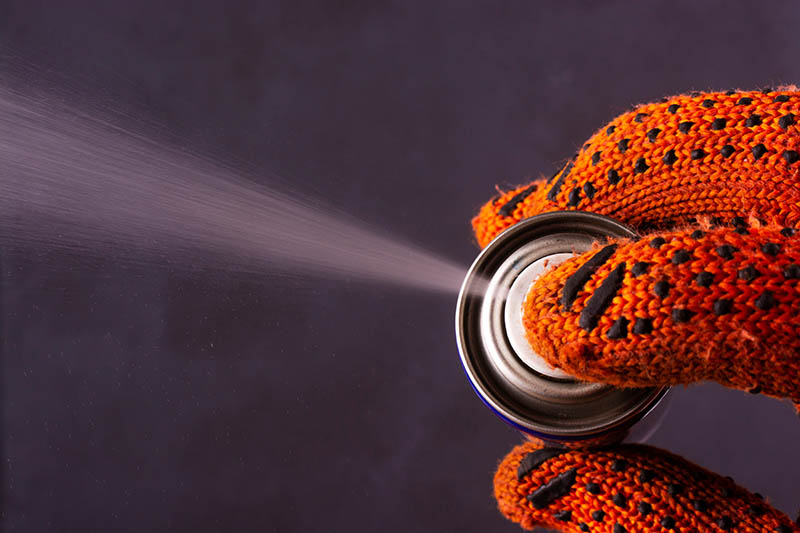
Remove Hard Water Spots
Sometimes hard water may leave unattractive stains on your porcelain tiles, shower door, and metal surfaces. This can be frustrating, but if you spray some WD-40 on those stains, you can wipe them off easily.
Conclusion
WD-40 is an American brand of multipurpose lubricant made from a secret formulation of hydrocarbons. WD-40 has been in use since the 1950s. Today, it is used to lubricate door hinges, clean surfaces, and protect metals from rusting.
Featured Image Credit: Safarov Nariman, Shutterstock
Contents


